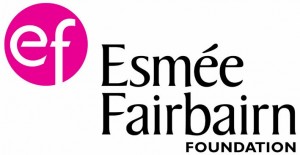There were three different strands to the project:
- A Primary 6 project
- A transition project, spanning the last term of Primary 7 and the first term of Secondary 1
- A Secondary 2 project.
The Primary 6 and Secondary 2 projects commenced on January 24th, 2011 and the transition commenced in April 2011. Each strand of the project encompassed 16 weeks with each weekly group work session lasting for 50mins – 60mins, depending upon the configuration of the school day.
There were six clusters of schools participating within the project, four in Aberdeenshire and two in Falkirk. Each cluster consisted of a Secondary school and one, two or three of its Associated Primaries. Each Cluster was supported by a Cluster Leader who coordinated the project at the ground level and acted as a liaison between the Support Group Leaders and the research team. All Support Group Leaders were drawn from staff within the schools and were volunteers.
63 pupils participated within the study, 73% of whom were boys. Pupils were distributed across the three projects as illustrated below:
For each Support Group pupil a comparator pupil of the same stage and gender was selected. These were pupils who were achieving well at school. Permission was sought of all pupils and their parents to participate within the study. Pupils were nominated by their class teachers or Pastoral Care Teachers on the basis of clearly identified criteria:
- The pupil is experiencing difficulty in coping with the norms of school life and/or may be at risk of such in the future
- It is felt that the pupil would benefit from participation within a Support Group.
Focus of Study
The principal focus of the study is to evaluate the efficacy of Support Groups and to establish the strengths and weaknesses of the approach across three stages – Secondary 2, the transition between Primary 7 – Secondary 1, and Primary 6.
Aims of Study
- To establish the impact of the intervention upon a range of pupil outcomes;
- To gain understanding of the variables which have impacted upon pupil progress;
- To identify the strengths and weaknesses within the approach;
- To gain understanding of the variables which acted as facilitators or barriers to the implementation of the approach beyond its initial context (related to 2. above), including those relating to the management of change, sustainability and leadership;
- To theorise from the findings to identify key issues which inform pedagogy, the transition process from Primary to Secondary and the inclusion of pupils experiencing EBD/SEBD in mainstream schools.
Research Questions
Research Question 1
- To what extent, if any, have pupils developed further intrapersonal and interpersonal intelligence (understanding of self and others)?
- To what extent, if any, has this impacted upon the pupil’s:
- capacity to regulate their behaviour with good judgement in a range of contexts
- capacity to form and maintain effective interpersonal relationships and for empathy
- self-esteem and self-efficacy (sense of being able to achieve)
- dispositions towards learning.
Research Question 2
What are the variables which have impacted upon pupil progress?
Research Question 3
What are the strengths and weaknesses of the approach as perceived by a range of stakeholders?
Research Question 4
- What are the variables which have acted to either facilitate or impede the development of the project beyond its initial context?
- What can be learned about the management of change and sustainability from the implementation of the intervention in new contexts?
- What can be learned about leadership from the implementation of the intervention in new contexts?
Research Question 5
What can be learned from the project to inform policy and practice in the following areas:
- Pedagogy
- The transition process from Primary to Secondary
- The inclusion of pupils experiencing SEBD in mainstream schools?



